Me and the 2023 Pittsburgh Marathon
One thing I’ve learned about myself since coming to college is that I really like traveling long distances using human-powered travel. Being outside is always great of course, but something about getting from Point A to Point B using nothing but my own muscle1 really appeals to my inner hunter-gatherer. So when I found out last December that Pittsburgh hosts a marathon every May where I could not only scratch my primal itch but get a medal for it, I knew I had to sign up.
In all seriousness, I had been looking for a new physical challenge ever since my bike ride along the Great Allegheny Passage (a story for another time), and unlike bike touring the marathon didn’t require me taking a week off for it, which was nice. The race also happened to be held during finals week of spring semester, making for good timing as a nice accomplishment at the end of my first half of college. So, with the unending confidence of youth by my side, I signed up for the 2023 Pittsburgh Marathon in early May, a little over five months away. I also conviced two of my friends and my mom to join me on this ridiculous adventure, though they opted for the more sensible half-marathon offered on the same day.
Training
It’s an unspoken rule that every blog post about the marathon race has to mention its origins in Greek legend. In 490 BC, an Athenian messenger witnessed a Greek victory over the Persian Empire in the Battle of Marathon, and to relay the news as quickly as possible ran the 20-plus mile distance from Marathon to Athens.2
He died immediately upon arrival.
Not wanting to share the fate of our poor hero, I decided to find a training plan and stick to it. It turns out there’s a huge variety of marathon regiments to choose from on the internet, ranging from 8 week don’t-do-this-or-you’ll-get-injured plans to personalized plans costing upwards of $30 a month for dedicated amateur athletes. Being 21 weeks out from the marathon, I decided to use a freely available 20 week novice training place, tacking on an extra light warmup week to the beginning.
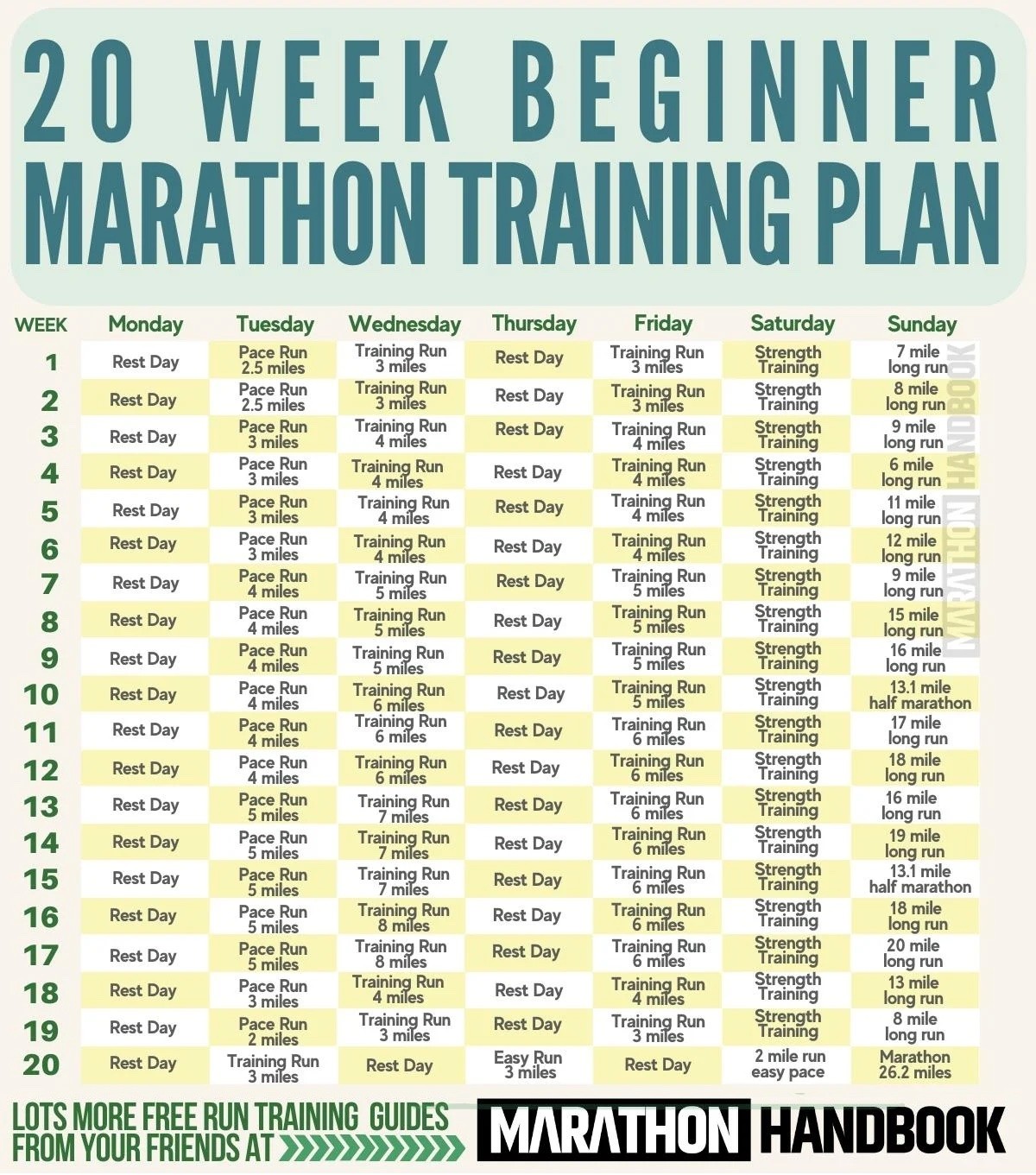
The plan consisted of one faster, shorter “pace”3 run, two medium “training” runs and the dreaded “long” run each week. I still had no idea how I’d ever be able to run the 20 mile day at the end of the plan (I had only ever even ran 6 miles straight a handful of times, and hadn’t run consistently since the very beginning of freshman year), but I figured I’d just trust the process and hope for the best.
I started my actual training during the last week of fall semester, thinking I could use the slow pace of Winter Break to ease into spending so much time running. I also decided to start posting runs to my strava, and even made a Snapchat Story to share my progress on (which I unfortunately have since deleted).
I found my first few weeks to be fairly easy all things considered, mostly since my training plan started with me barely running half a marathon a week. I came to even enjoy my long runs at times; since they got longer each week I found myself able to explore more and more areas I’d never seen or only biked to before. Before I knew it, I had ran my first half-marathon to downtown Pittsburgh and back in late January.


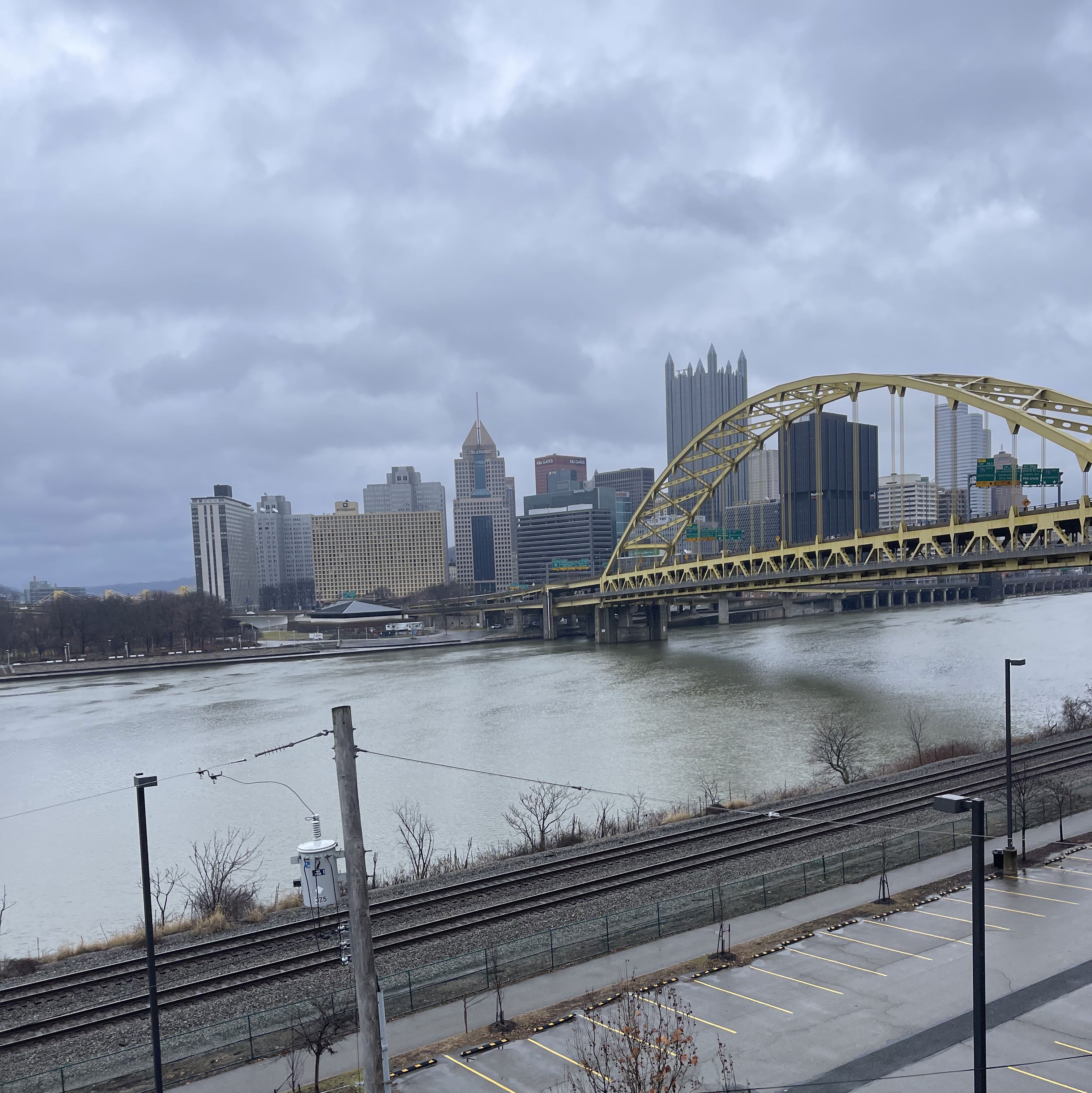
As spring semester came into full swing however, a few problems began to arise with my training:
- As a college student, I got a lot busier through February and March as the semester ramped up (being a first-time TA didn’t help, either). This, along with my runs getting longer in length and duration, made it increasingly difficult to fit marathon training into school and life. It definitely helped that I could do my long runs on Sunday mornings when I didn’t have any commitments, but some of my weekday runs got pushed as late as midnight when homework called.
- I had some issues with motivation in the middle of my training, being far enough in that my naïve excitement had worn off but not so near the end as to feel the impending race coming. I also started having issues with knee pain from increasing my mileage so quickly, which didn’t help. I ended up missing a few odd days around this time, but luckily the unseasonably hot weather this past winter kept beckoning me outside to keep going.
My biggest hurdle of all, however came just after Spring Break. Because of all the mileage I had put on recently, my shoes were getting worn out quickly and started losing their support. I decided to get a pair of ultra-cushoning shoes in hopes that they would soften my impact when I ran and would help my fix any lingering shin pain I experienced. Instead, the new shoes forced me to alter my running form and within a week caused terrible knee pain whenever I walked, let alone ran over 15 miles.4 This was the only point in my entire training process that I genuinely doubted if I’d be able to complete the marathon in May, since I wasn’t sure if the pain would go away soon enough, or how much training I’d end up losing even if it did. It didn’t help that I stubbornly kept trying to half-train while injured, only making everything worse.
Ultimately, I ended up taking two weeks off of any training whatsoever to heal, and pushed back my longest run into what was supposed to be a “taper week”, when training plans have you run less to be in top shape for the race itself. I ended up missing most of my longest runs and hardest weeks, but I’m very glad I at least got a 20 mile run in as a confidence booster.
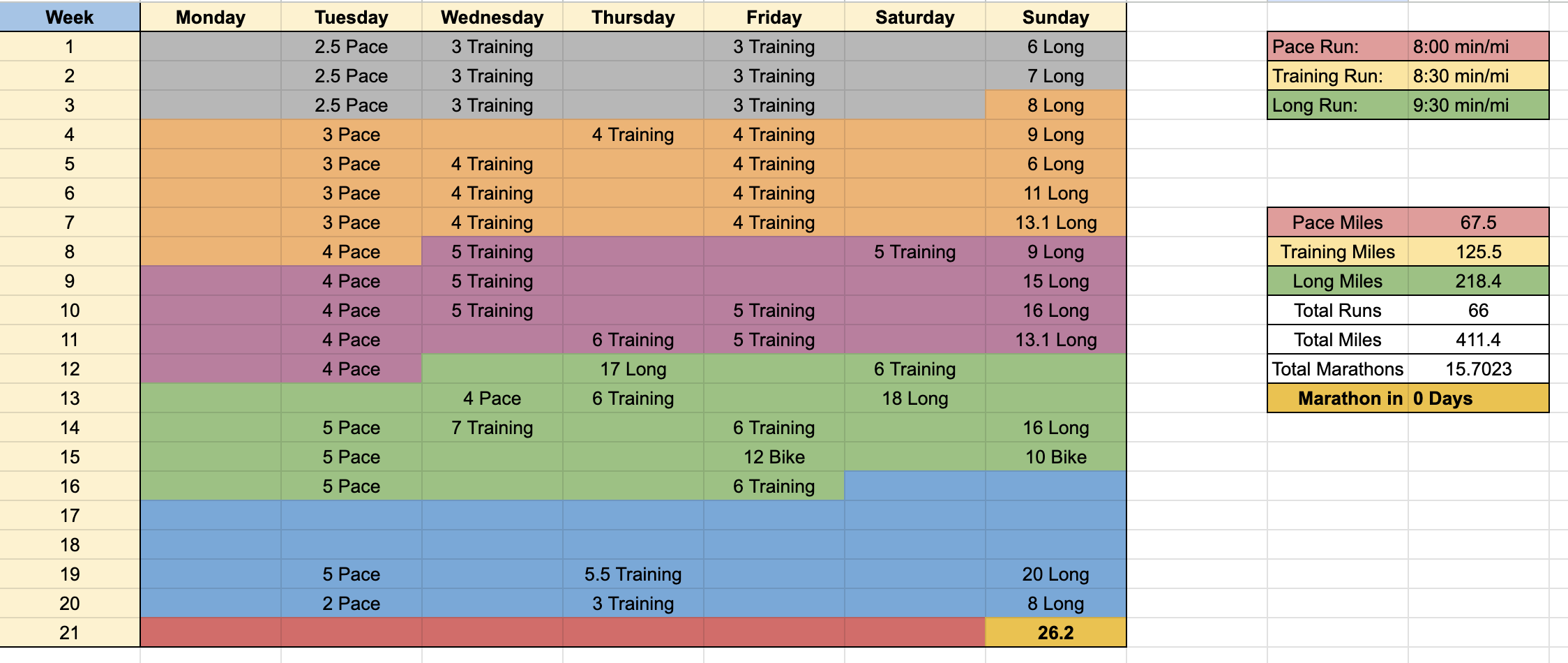
The Race
I came upon the day of the race both far more excited and far more worried than I had expected to be. On the one hand, the race I had been consistently working towards and looking forward to for five months had finally arrived, and I was excited to show off how much I had improved from last December. On the other, my shin had still only been at 80% for the week leading up to the race (prompting another week off), and while I knew I would at least attempt the race no matter what there was a real possibility of not being able to finish due to lingering injury.
I am very grateful for how well all of the marathon-related festivities are run in Pittsburgh. A few days before the marathon itself, the marathon organization hosts a “Health and Fitness Expo” for T-shirt and running bib pickup in a huge convention center, along with dozens of booths for health-related products and a few photo opportunities. There was also free Chick-fil-A at the entrance, which while ironic given the health-focused nature of the expo is always a nice addition. The hype from the expo wore off on me and made me feel a lot better about my impending race.
The day of the marathon began with me getting eating breakfast and gathering my clothes, my running bib, and a few energy gels for the race itself. The race started at 7:00 am, so I met up with my other friends running that day and we all took an Uber to arrive at the start downtown by 6:15. From there we all warmed up and (after several bathroom breaks) entered the start line coral.
A little bit about the course itself: The marathon and half-marathon begin at the same time downtown, before making their way through the Strip District and the North and South sides on an incredibly flat route. Around mile 10 both courses cross the Monongohela into South Oakland, at which point the half-marathon returns straight to downtown while the marathon immediately tackles a 150-foot hill towards the University of Pittsburgh. The marathon then meanders around various rolling hills on the outskirts of Pittsburgh before finally returning to the finish line. I set my ultimate goal a while back as finishing in 4 hours and 20 minutes, since I had been running my long runs at a 9:30-10:00/mi pace and 4:20 served as a marathon-lengthed extrapolation of that.5
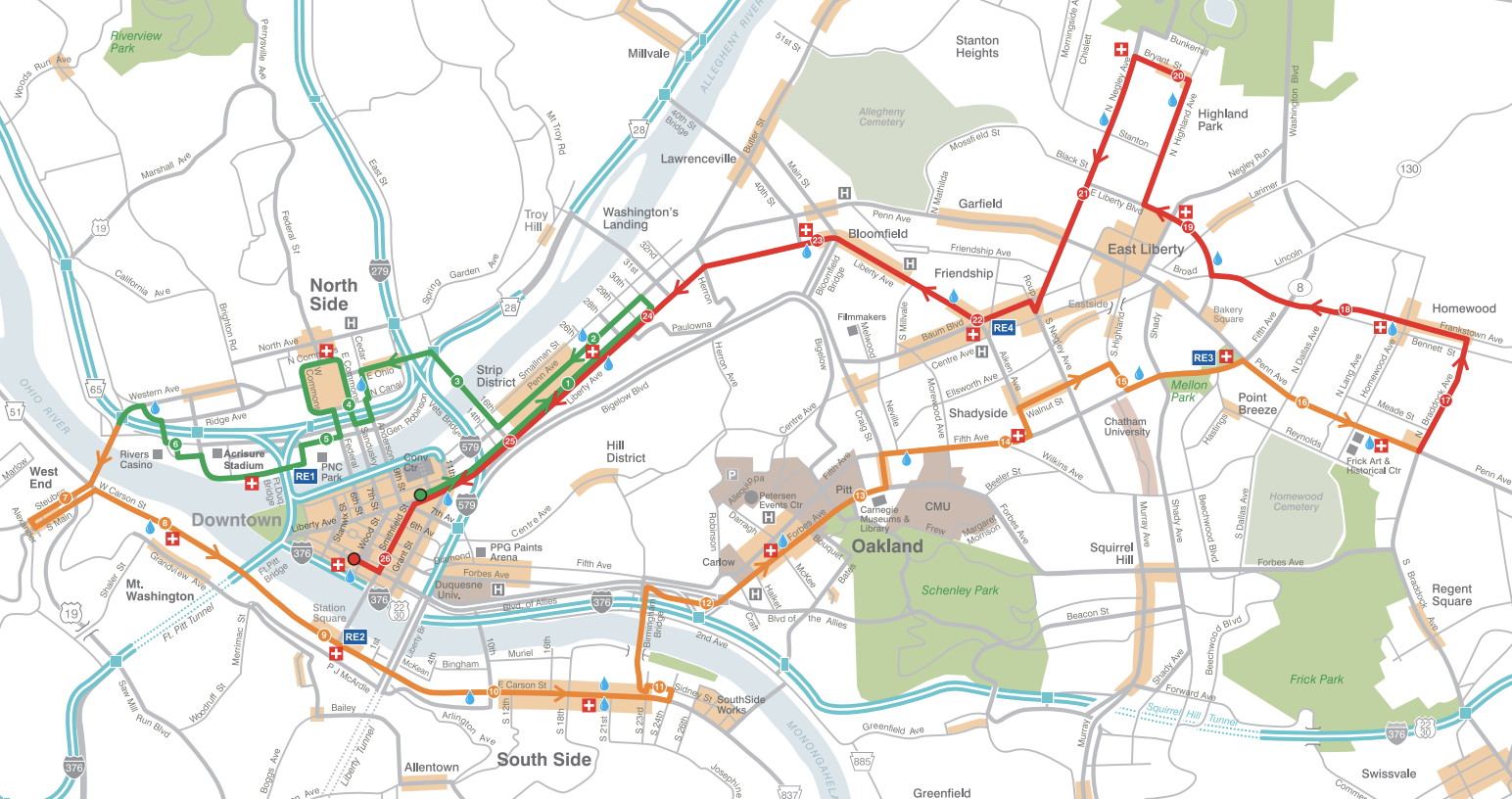
After what felt like hours of waiting for the start coral to slowly move forward, I began the marathon at 7:30 am and immediately started off much faster than I had planned. A combination of my own adrenaline and everyone around me practically sprinting caused me to run my first few miles at near a 9:00 pace, one which I knew I could not hold but was having fun trying for now. I think the adrenaline also cured my shin pain, as I barely had any issues with it whatsoever throughout the whole race (a rather anticlimactic end to the shin arc I’ve built in this post).
I ended up running with one of my friends doing the half-marathon for the joint portion of our races, which definitely didn’t help my intense pace given he was running half the distance. Still though, it was fun running with a friend for the first time since my training began in December. Another thing I realized around this point was that the marathon places its mile markers based on the optimal line one could take around the course, which I most certainly was not taking. This meant my 9:00 pace registered as closer to a 9:45 by their time, which is unfortunate.
The joint section also was really great for how many Pittsburgh residents decided to show up and cheer for everyone. For the entire first 10 miles, it was difficult to find a 20-foot stretch without anyone holding a sign or offering orange slices to the oncoming horde of runners. It was nice to see recognition for the race from so many people. We also crossed over three bridges in this time, which is epic in its own right.
Eventually though, the marathon split off from the half, forcing me to say goodbye to my friend who I’m sure was thrilled he only had three miles left. Immediately after the split is the biggest hill of the course, where the marathon has volunteers dedicated to running up the hills with runners and cheering them on. One of them actually decided to stay next to me as I ran up, which was a slightly surreal experience even if it meant I climbed the hill significantly faster than I should have.6
I ran strong through the halfway point since it happened to lay right next to CMU, and I wanted to look good for any of my friends if they were watching (sadly, they were not). As the miles wore on however, I found my pace steadly deteriorating as I began to pay for my hubris in starting so quickly. My quads especially began hurting more than I ever knew they could, and I even had to start walking for small sections past mile 18. The crowd of onlookers, while as supportive as ever, had noticeably thinned after the half-marathon split off as well.
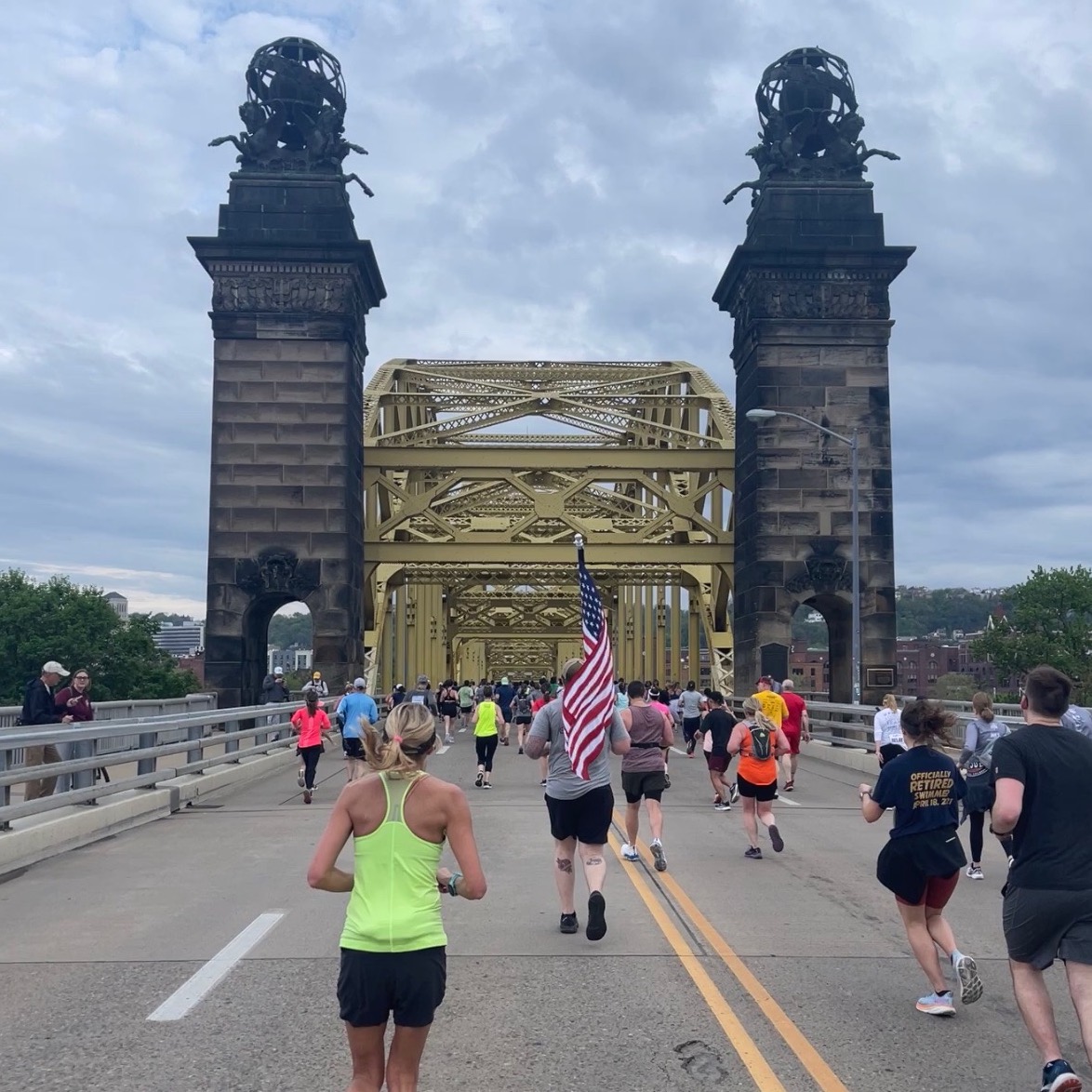

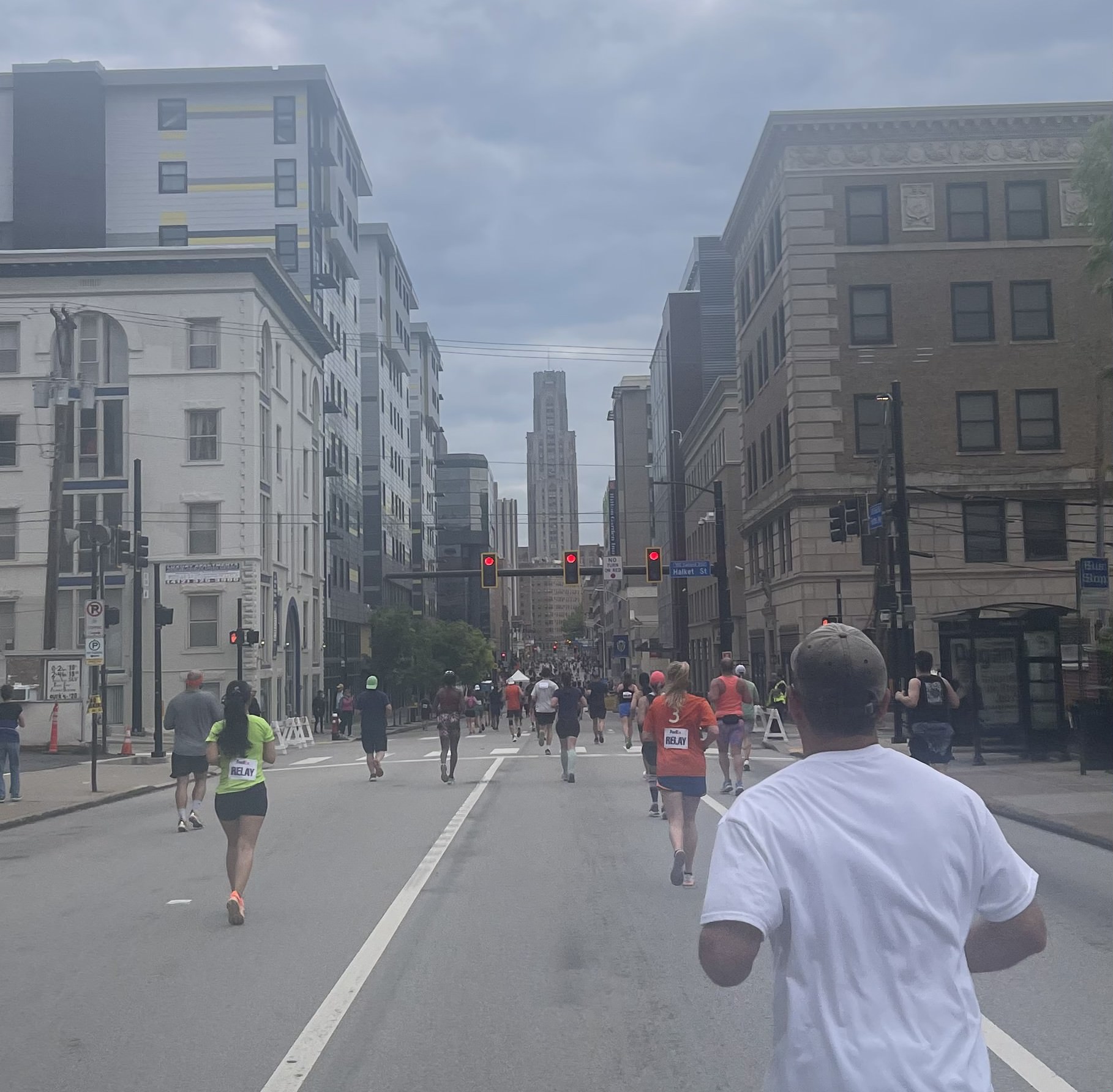
I pushed through, and while I remember little of miles 15-25 I know one way or another I made it to the final stretch downtown, with a returned density of cheering viewers. I did my best attempt at a sprint to the finish line, and ended up finishing the race in 4:31:10.7 Apparently it’s standard practice for marathons to include a quarter-mile “finish chute” in which they bestow your medal on you along with bananas and bagels and heat sheets, and while I really appreciated the sentiment I really wish I didn’t have to walk an extra step after running 26.2 miles. From there, I got to take some pictures with friends and family, and proceed to not run again for another week to let my quads stop scolding me.

Overall, I would highly recommend any long-distance running event to anyone who’s even remotely interested in signing up for one (though I would definitely either start with a half-marathon or take more time to prepare if I could do it again just for the sake of injury prevention). The Pittsburgh Marathon in particular was really well organized and such a great atmosphere to run in, and so Pittsburgh students or residents especially should consider it!
-
…and often a bike. ↩
-
Despite its name, I ended up running my long runs at my goal pace and my pace runs significantly under, just since I wanted experience with running long distances at my goal pace. ↩
-
I never saw a doctor about it and thus don’t want to definitively label it shin splints, but the pain was quite bad nonetheless. ↩
-
My 70-100 professor also mentioned his marathon PR as a 4:24, and I desperately wanted to beat him as well. ↩
-
If you are somehow the volunteer who ran with me, feel free to reach out! I wish I could’ve ran with you longer if not for the requirements of your position. ↩
-
Though, since strava believes I ran an extra mile, I finished a “marathon” in 4:21:31. ↩